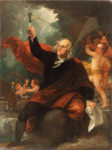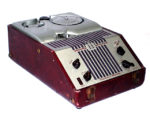Ben Franklin makes a shocking revelation, the first American woman in space blasts off and a communications giant is born.… It all happened This Week in Tech History.
This week in 1752 – Founding father, Benjamin Franklin finally got the opportunity he had been waiting for, to prove a connection between lightning and electricity. As the skies over Philadelphia darkened, he gathered his supplies, a simple kite, string, a house key and a Leyden jar, which was a primitive form of capacitor to store an electric charge. He then hurried out to a field and let his kite fly. Contrary to popular misconceptions, his kite was not struck by lightning. If it had been, he probably would have been killed. Instead, his kite picked up on the ambient electrical charge from the storm. When he noticed the loose threads on the hemp string standing erect, he moved his finger near the key and felt that same spark we’ve all experienced after walking on carpet in our socks. Franklin continued his work with electricity, ultimately perfecting an invention we still use in many buildings today – the lightning rod.
1944 – The wire recorder was patented by Marvin Camras. Wire recorders were the first magnetic recording technology, an analog type of audio storage in which a magnetic recording is made on a thin 37 gauge steel wire. Magnetic wire recording was replaced by magnetic tape recording in the 1950s.
1983 – Dr. Sally Ride became the first American woman in space, beginning her ride aboard the space shuttle “Challenger” for a six-day Odyssey. Dr. Ride remains the youngest American astronaut to have traveled to space, having done so at the age of 32.
And this week in 2000 – The Federal Communications Commission approved the merger of Bell Atlantic and GTE, marking the final regulatory hurdle for the new combined company, to be named Verizon, a combination of the latin word veritas, meaning “truth” and the English word, horizon.





